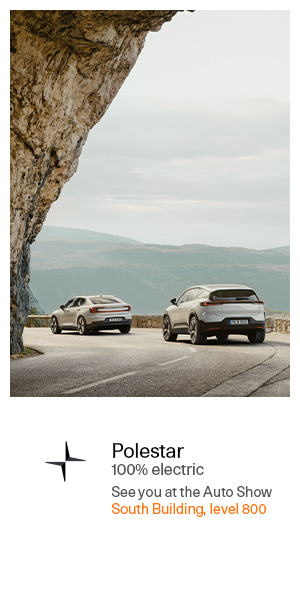Driving Forward
BY BRENDAN CHRISTIE
Millennials nearly parallel baby boomers in car ownership, quietly affirming their commitment to automotive life. Meanwhile, 75% of gen z view cars as a ‘third space.’ Despite economic hurdles, the quest for mobility thrives, sparking innovation and steering a connected future.
We’ve all heard the narrative: younger generations, specifically Millennials and Gen Z, just aren’t all that interested in driving anymore. Driving is done. Hang up the keys. We had a good run.
And while most media coverage this days seems driven by a healthy dose of angst and sensationalism, the data does suggest a worrying trend. On face value, it looks like each new generation has been less inclined to embrace the traditional thrill of taking to the open road.
Consider a 2022 study published in the journal Transportation Research that analyzed driving habits among different generations of US drivers. The findings showed that Millennials (born between 1981 and 1996) drive 8% less than Gen X (1965 to 1980), and 9% less than younger baby boomers (1956 and 1964).
Add to that data from the US Federal Highway Administration and you can see the decline in the percentage of 19-year-olds with driver’s licenses – dropping from 90% in 1983 to just 68% in 2021.
If you’ve spent money on, well, pretty much anything in the last few years, there’s little wonder why. Driving – along with everything else – just costs more now. And, as prices for food and housing go up, mobility is one area that some people can compromise on, especially given the urbanization of much of the Canadian and US populations.
Then, factor in the difference in what it took Baby Boomers and Gen X to get their license compared to the hoops later generations have had to jump through. For earlier generations, getting your license meant writing a simple test, showing up on time for the practical and somehow managing to stay between the lines without hitting anything. Now, it’s a multi-year production with graduated licensing that make our roads safer, but are also making younger drivers question the practicality of investing all that time and effort.
It’s little wonder that we’re seeing a generational shift from ownership to “usership” – exemplified by the popularity of ride-sharing services like Uber and Lyft.
But, as with most things, it really comes down to how you interpret the numbers.
Focusing solely on teenage drivers, it turns out, may be oversimplifying things. Pull back the lens and you see that, as Millennials have grown up, their ideas about car culture aren’t all that different from the generations that came before.
Authors Christopher Knittel, a professor of applied economics at MIT, and Elizabeth Murphy, a project manager at Genser Energy, crunched the numbers for a study for the National Bureau Of Economic Research. What they found was that if you generalize, and only look at what generation a household belongs to, Millennials own approximately 0.4 fewer vehicles per household than the average Baby Boomer. And, based on that, you might say that younger generations appear to be less interested in cars.
But that’s a misleading interpretation, say the authors. Once you start to dig deeper and factor in data such as income, marital status (Millennials are marrying later) household size (they have slightly larger families than some of their predecessors), income, location (rural vs. urban), education and other info, the differences between this generation and the last start to disappear – with a net result of only a slight reduction of vehicles per household (less than 1 percent), according to the study.
“We find that Millennials are delaying some of their life choices,” say the authors. “The results suggest that, while Millennial vehicle ownership and use may be lower early on in life, these differences are only temporary and, in fact, lifetime vehicle use is likely to be greater.”
That data is supported by YD Labs, the research division of Young Drivers of Canada. Looking back over an eleven year data set (2012 to 2022), the company found that the average age of their driving school students had remained pretty consistent – around 20.5 years of age.
“This trend serves as a testament that despite suggestions that the Millennial Generation and Generation Z have opted to delay obtaining their driver’s license,” they note, “these statistics show that Canadians still want to get their driver’s license early in the driving lifecycle.”
Now, the main focus has shifted to Generation Z, with much hype about how they’re also not interested in taking to the road. But consider a recent CARAVAN survey conducted by global advertising and tech company Big Village, which found that 75% of Gen Z drivers (compared to 49% of drivers overall), are more likely today to view their vehicle as a ‘third space.’ What’s a third space? It’s a term coined by sociologist Ray Oldenburg describing a place where people exchange ideas, have a good time and build relationships. It’s where we go to relax and escape the stress of life.
That sounds an awful lot like what Boomers (and the Silent Generation before them) bought cars for…
Then consider that Millennials and Gen Z are facing a perfect storm on the economic front. With stagnating wages and soaring costs, they are increasingly being forced out of urban centres to find more affordable living – meaning they’re going to have an even greater reliance on personal vehicles for mobility.
But, regardless of how you crunch the numbers, our relationship with our vehicles is complex; and while different generations have been influenced by different things, our basic need for mobility hasn’t changed. In fact, it’s probably greater than its ever been.
That doesn’t mean we stop innovating. In fact, it’s just the opposite. Knowing that our reliance on personal mobility isn’t going anywhere, we need to find mobility solutions that respect our individual freedoms, the demands of environmental responsibility and the requirements of society as a whole.
And, sure, the time might come that we hang up our keys and settle down. But that time doesn’t appear to be coming anytime soon.
It may be looming just over the horizon… But, if it is, we’re probably all going to drive to get there.



